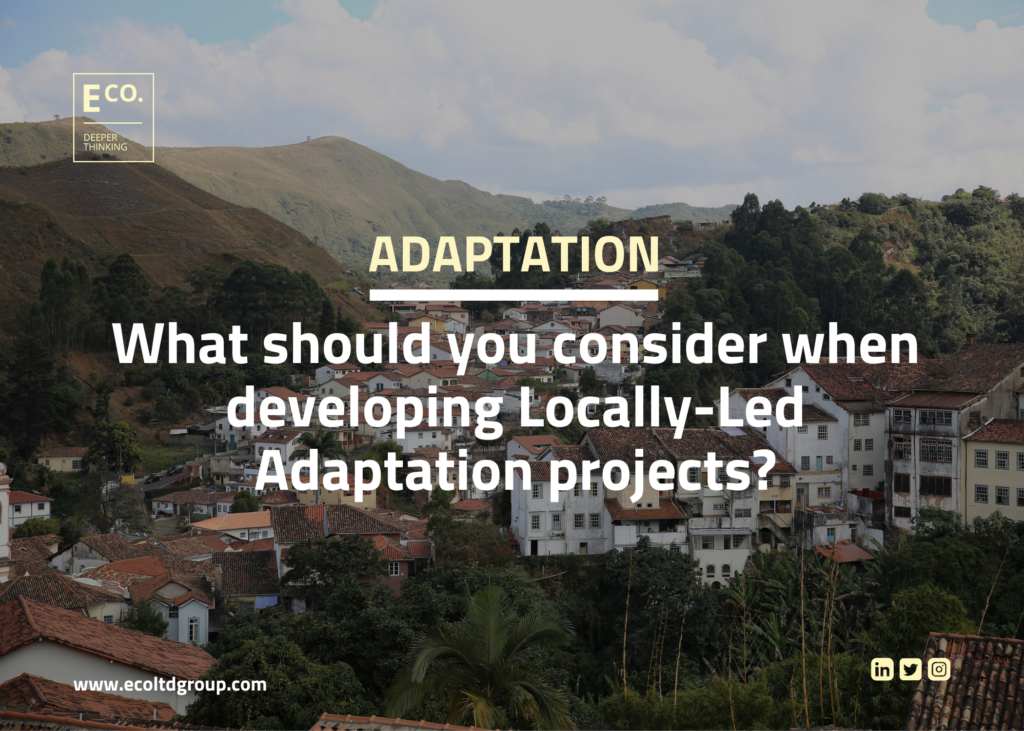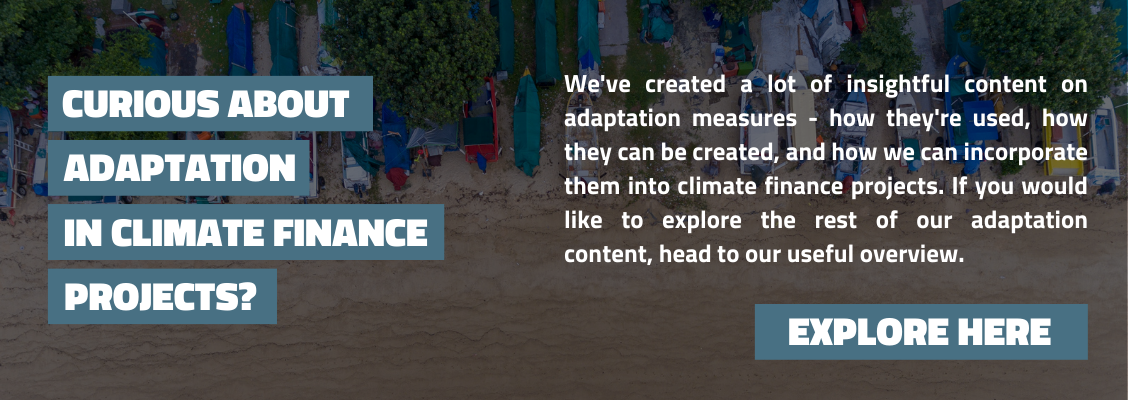What should you consider when developing Locally-Led Adaptation projects?
9 May 2023, Category: All insights, News, Tags: adaptation, climate change, climate finance, LLA, Locally-led adaptation, project design, sustainable development

What is Locally-Led Adaptation and why is it important?
Despite efforts to cut GHG emissions, climate change has already been affecting communities across the globe. Increased floods, more intense droughts, and sea-level rise, for example, have a disproportionate impact on the world’s most vulnerable groups. Because climate change and its impacts are more easily observed and experienced at the local level, local actors are uniquely positioned to understand and respond to the needs of vulnerable groups within their communities. However, these actors are often left behind in decision-making, design, and implementation of adaptation strategies.
Locally-Led Adaptation (LLA) is, therefore, an effort to go beyond the mainstream top-down approach to decision making, and embed local stakeholders at the lowest administrative structure in the decision-making process and implementation of the interventions that will affect them. These stakeholders may include local communities, community-based organisations, citizen groups, local governments, and local private sector entities.
Here’s what is needed for LLA to be properly utilised:
- An understanding of where LLA fits within the design and implementation of adaptation measures;
- Fit-for-purpose applications for delivery;
- Knowledge of and preparation for the several challenges that can be faced;
- And the best practices that can be applied.
The impact of Locally-Led Adaptation
By using local knowledge and empowering local people to prioritise, design and implement adaptation measures, the LLA approach enhances accountability and engagement of vulnerable groups, reducing the chances of maladaptation. Effective and sustainable adaptation measures will only be possible with a well-connected governance system and co-governance agreements with greater agency of local actors.
It is important to highlight that LLA goes beyond a thorough process of stakeholder engagement and aims at providing the means for local communities to take the lead. By providing information, technical capacity and resources to local actors, LLA approaches empower the traditionally excluded and marginalised communities that are most vulnerable to climate change impacts.
Examples of Locally-Led Adaptation
LLA initiatives can have different delivery mechanisms that include governance, financial, legal and technical processes to support adaptation at the local level. They target different needs depending on the local context, including geography, governance and recipients. Some examples can be divided into the following categories:
- Government delivery mechanisms: These can include government-led funds to provide climate finance through enhanced direct access, devolved climate finance, and shock-responsive and adaptive social protection.
- Civil society delivery mechanisms: Such as regional civil society funds, constituency-governed funds, microfinance, ecosystem-based adaptation .
- Private sector delivery mechanisms: Private finance investors and aggregators and risk-sharing facilities.
Challenges for effective LLA
Practitioners trying to implement an LLA approach may face a variety of technical and political challenges. These include:
Limited financial resources
Although the organisations advocating for more LLA have called for a commitment of 25% of climate finance for LLA, with this target progressively increasing over time, the current situation is still far from it. Funders are still reluctant to invest in local actors due to high perception of risks, high transaction costs, and insufficient capacity. The consequence is that limited amounts of funds make it to the local level and do not respond to local priorities.
Local actors have low technical capacity
Local communities and actors are aware of the impacts of climate change on its daily life, but they lack the capacity to plan and implement adaptation strategies themselves. This can include limited administrative capacity, weak policies and governance, and difficulties to access information.
Weak governance and coordination among different actors
The lack of clear responsibilities, limited coordination, and power imbalances between different levels of governments and local communities increases transaction costs and hinders the sustainability of adaptation measures.
Best practices for LLA
Launched during the 2021 Climate Adaptation Summit, the 8 principles for Locally Led Adaptation have been endorsed by several organisations, including E Co., and now serve as a guide to design more effective and equitable adaptation, with more agency for local actors over the processes and outcomes. These can be seen as a starting point for understanding Locally-Led Adaptation and how to implement the approach.
The following points must be considered when implementing and LLA approach:
- Consider the context and needs of local actors and communities in the design and implementation of adaptation measures;
- Actively support local actors’ leadership through the entire process;
- Ensure inclusive representation and involvement of local actors;
- An important point to remember is that local actors may need more flexibility within the funding process and within project design;
- Inter-institutional collaboration is needed to ensure sustainability and scalability of the measures.
Searching for insight on how to develop fit-for-purpose adaptation projects?
The development of successful adaptation projects around the globe that account for local context and ensure the needs of local communities are met is a difficult task. If you’re looking for support on a project, get in touch with one of our experienced consultants, or explore what we can do.
You can email us at: amy@ecoltdgroup.com

You can also follow us through our social media accounts:
Twitter: @ecoltdnews
LinkedIn: E Co.
Instagram: @ecoltdnews

Join the conversation by posting a comment below. You can either use your social account, by clicking on the corresponding icons or simply fill in the form below. All comments are moderated.